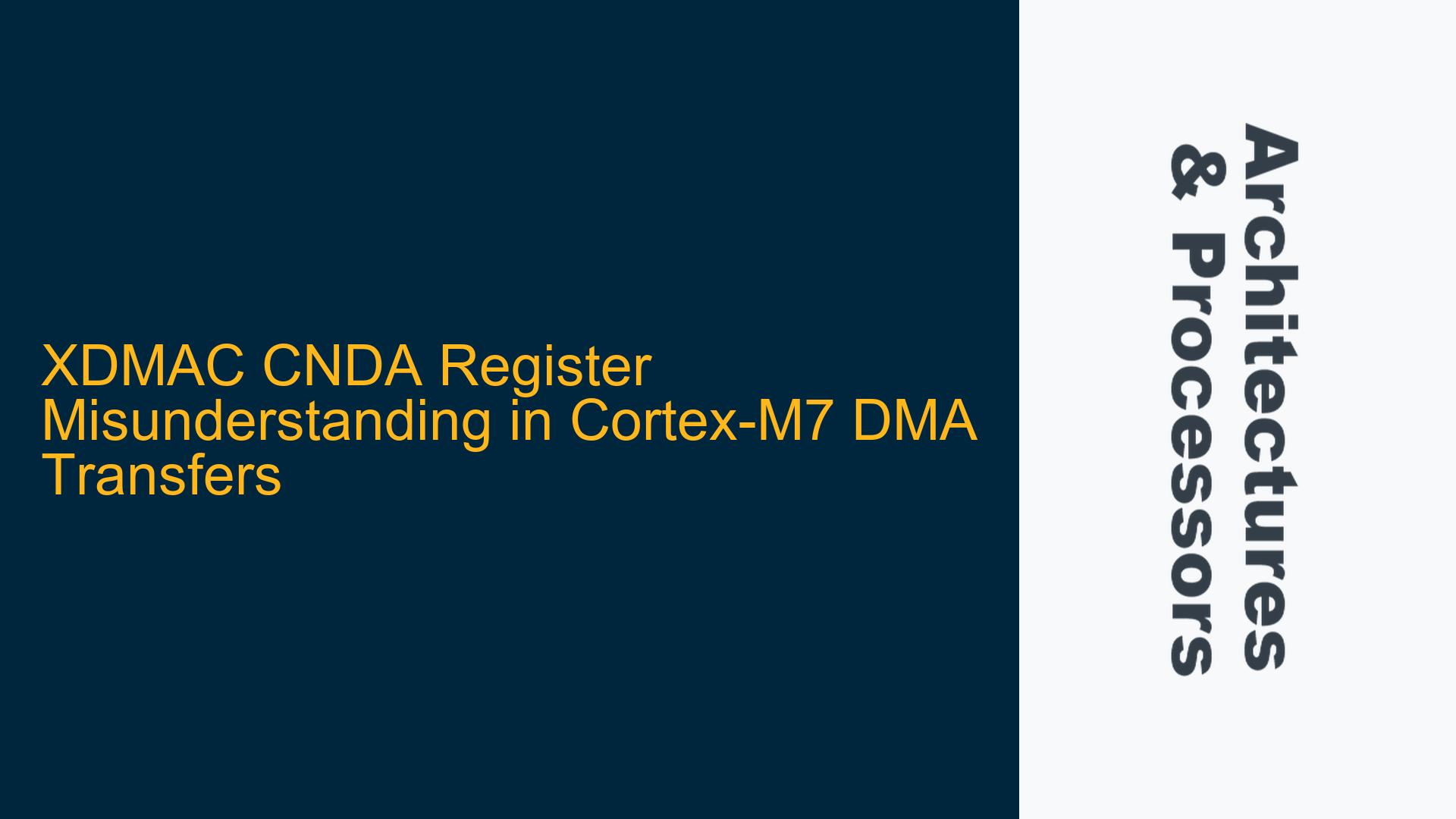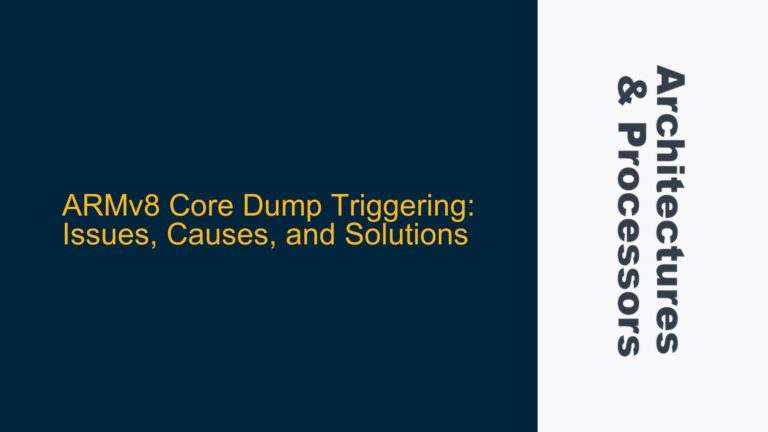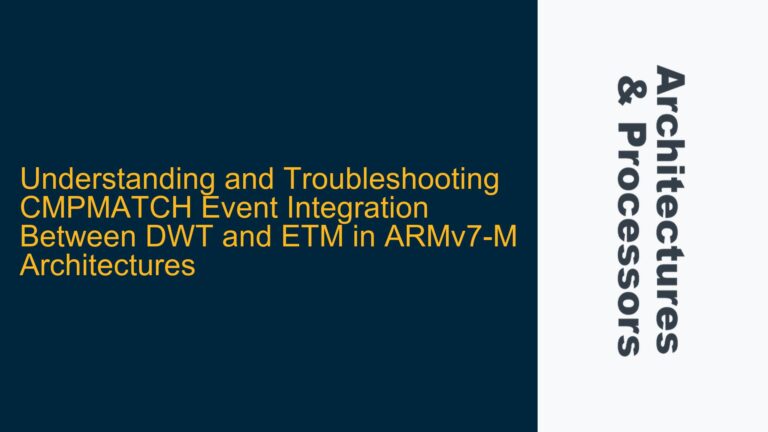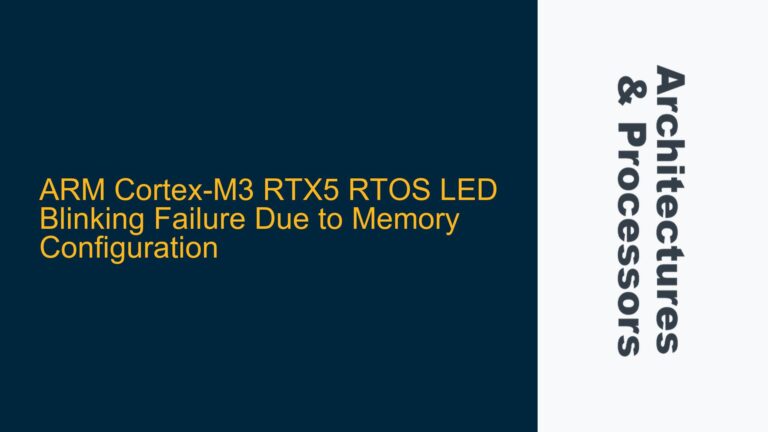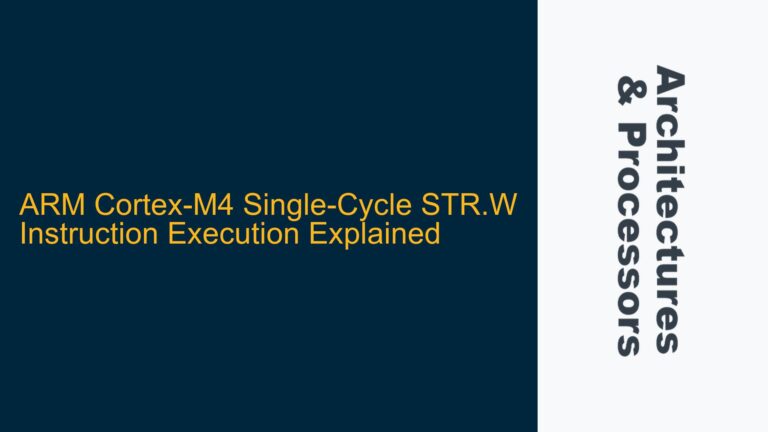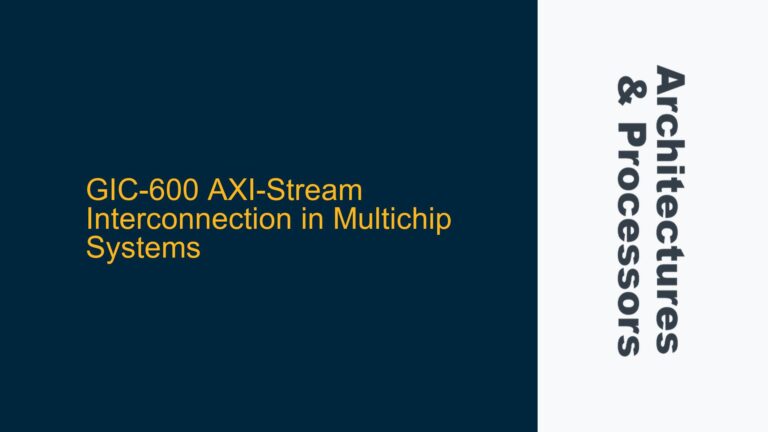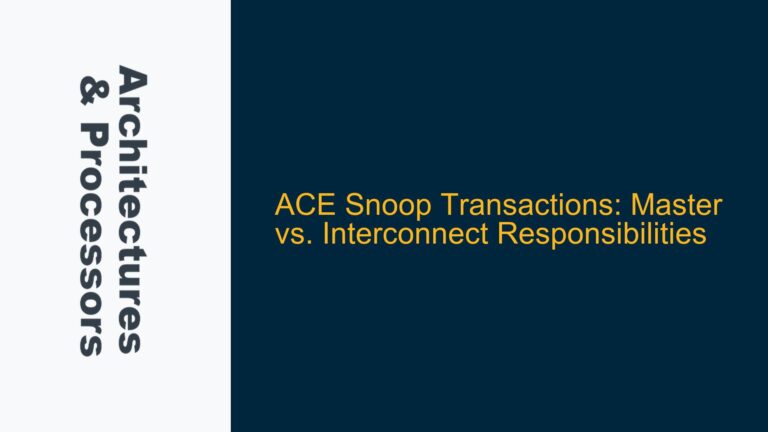XDMAC CNDA Register Behavior During DMA Completion Interrupts
The XDMAC (Extended Direct Memory Access Controller) is a peripheral commonly found in ARM Cortex-M7 microcontrollers, particularly those from Microchip (formerly Atmel). It is used to manage high-speed data transfers between memory and peripherals without CPU intervention. One of the critical registers in the XDMAC is the Channel Next Descriptor Address (CNDA) register, which plays a pivotal role in managing linked-list-based DMA transfers. However, there is often confusion about the behavior of the CNDA register, particularly when it is read during a DMA completion interrupt service routine (ISR).
The core issue revolves around the interpretation of the CNDA register’s value at the time of the ISR execution. Specifically, when the ISR is triggered to indicate the completion of a DMA transfer for a specific buffer, the CNDA register’s value can be ambiguous. Developers often struggle to determine whether the CNDA register points to the next buffer that will be processed or the buffer that is currently being processed. This misunderstanding can lead to incorrect buffer management, resulting in data corruption, missed transfers, or inefficient processing.
To clarify, the CNDA register holds the address of the next DMA descriptor that the XDMAC will process. However, the timing of when this register is updated relative to the ISR execution is critical. If the ISR reads the CNDA register immediately upon being triggered, it may not reflect the correct state of the DMA transfer sequence. This ambiguity is particularly problematic in ping-pong buffer configurations, where two or more buffers are used alternately to ensure continuous data flow.
For example, consider a scenario where three buffers (Buffer 1, Buffer 2, and Buffer 3) are configured in a linked list. When the DMA transfer for Buffer 1 completes, the ISR is triggered. At this point, the CNDA register could either point to Buffer 2 (indicating that Buffer 2 is about to be processed) or Buffer 3 (indicating that Buffer 2 is currently being processed and Buffer 3 is next). Misinterpreting this value can lead to incorrect buffer handling, such as prematurely processing Buffer 2 or failing to process Buffer 3.
This issue is further complicated by the fact that the XDMAC may update the CNDA register at different stages of the DMA transfer process, depending on the specific implementation and configuration. Therefore, understanding the exact behavior of the CNDA register is essential for correctly implementing DMA-based data transfer systems.
Memory Descriptor Chain Misalignment and CNDA Update Timing
The root cause of the confusion surrounding the CNDA register lies in the timing of its updates and the alignment of the memory descriptor chain. The XDMAC operates by processing a linked list of memory descriptors, each of which contains information about the source and destination addresses, transfer size, and the address of the next descriptor. The CNDA register is updated to point to the next descriptor in the chain as the DMA transfer progresses.
However, the exact timing of this update can vary depending on the XDMAC configuration and the specific stage of the DMA transfer. In some cases, the CNDA register may be updated immediately after the current descriptor is processed, while in other cases, it may be updated only after the entire transfer for the current buffer is complete. This variability can lead to discrepancies in how the CNDA register is interpreted during the ISR.
Another contributing factor is the potential misalignment of the memory descriptor chain. If the descriptors are not properly linked or if there are gaps in the chain, the XDMAC may not update the CNDA register as expected. This can result in the CNDA register pointing to an incorrect or invalid descriptor, further complicating the interpretation of its value during the ISR.
Additionally, the XDMAC may have different modes of operation, such as single-buffer mode, multi-buffer mode, or circular buffer mode. Each mode has its own rules for updating the CNDA register, and misunderstanding these rules can lead to incorrect assumptions about the register’s behavior. For example, in circular buffer mode, the CNDA register may wrap around to the beginning of the buffer chain once the end is reached, whereas in single-buffer mode, it may stop updating after the last descriptor is processed.
Finally, the interaction between the XDMAC and the CPU can also affect the CNDA register’s behavior. If the CPU accesses the CNDA register while the XDMAC is in the process of updating it, the value read by the CPU may be inconsistent or stale. This race condition can further obscure the true state of the DMA transfer and lead to incorrect buffer management.
Implementing Proper CNDA Register Handling and Buffer Management
To address the issues surrounding the CNDA register and ensure correct DMA operation, developers must implement proper handling of the CNDA register and buffer management strategies. The following steps outline a comprehensive approach to resolving these issues:
-
Understand the XDMAC Datasheet and Reference Manual: The first step is to thoroughly review the XDMAC datasheet and reference manual for the specific microcontroller being used. These documents provide detailed information about the CNDA register’s behavior, including when it is updated and how it should be interpreted during different stages of the DMA transfer. Pay close attention to the sections describing the XDMAC’s operation modes and descriptor chaining.
-
Verify the Descriptor Chain Alignment: Ensure that the memory descriptor chain is properly aligned and that there are no gaps or misconfigurations in the chain. Each descriptor should correctly point to the next descriptor in the sequence, and the final descriptor should either point back to the beginning (in circular buffer mode) or indicate the end of the chain (in single-buffer mode). Use debugging tools to inspect the descriptor chain and confirm that it is correctly configured.
-
Implement Proper ISR Handling: When the DMA transfer completes and the ISR is triggered, carefully read the CNDA register and interpret its value based on the XDMAC’s documented behavior. If the CNDA register is updated immediately after the current descriptor is processed, it will point to the next descriptor in the chain. If it is updated after the entire transfer is complete, it may point to the descriptor after the next one. Use this information to determine which buffer needs to be processed next.
-
Use Synchronization Mechanisms: To avoid race conditions between the XDMAC and the CPU, implement synchronization mechanisms such as memory barriers or atomic operations when accessing the CNDA register. This ensures that the CPU reads a consistent value from the CNDA register, even if the XDMAC is in the process of updating it.
-
Test and Validate the Implementation: After implementing the above steps, thoroughly test the DMA transfer system to ensure that it operates correctly under all conditions. Use test cases that cover various scenarios, such as different buffer sizes, transfer rates, and operation modes. Monitor the system’s behavior using debugging tools and verify that the CNDA register is being interpreted correctly and that the buffers are being processed in the correct order.
-
Optimize for Performance: Once the basic functionality is confirmed, consider optimizing the system for performance. This may involve adjusting the buffer sizes, optimizing the descriptor chain, or fine-tuning the XDMAC configuration to minimize latency and maximize throughput. Use profiling tools to identify any performance bottlenecks and address them as needed.
By following these steps, developers can ensure that the XDMAC’s CNDA register is correctly interpreted and that the DMA transfer system operates reliably and efficiently. Proper handling of the CNDA register is essential for achieving high-performance data transfers in ARM Cortex-M7-based systems, particularly in applications such as audio processing, where continuous and uninterrupted data flow is critical.
In conclusion, the CNDA register’s behavior in the XDMAC is a critical aspect of DMA transfer management in ARM Cortex-M7 microcontrollers. Misunderstanding its behavior can lead to significant issues in buffer management and data transfer reliability. By thoroughly understanding the XDMAC’s operation, verifying the descriptor chain alignment, implementing proper ISR handling, using synchronization mechanisms, testing the implementation, and optimizing for performance, developers can overcome these challenges and ensure robust and efficient DMA-based systems.
